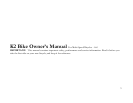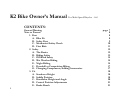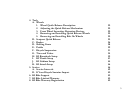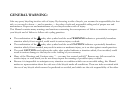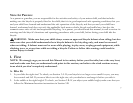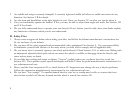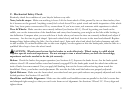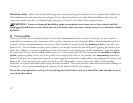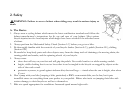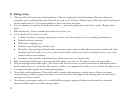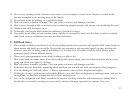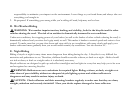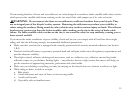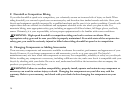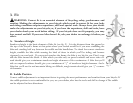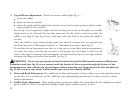
11
2. Safety
WARNING: Failure to wear a helmet when riding may result in serious injury or
death
A. The Basics
1. Always wear a cycling helmet which meets the latest certification standards and follow the
helmet manufacturer’s instructions for fit, use and care of your helmet. Most serious
bicycle injuries involve head injuries which might have been avoided if the rider had worn
a helmet.
fig. 1
2. Always perform the Mechanical Safety Check (Section 1.C) before you get on a bike.
3. Be thoroughly familiar with the controls of your bicycle: brakes (Section 4.C.); pedals (Section 4.E.); shifting
(Section 4.D.)
4. Be careful to keep body parts and other objects away from the sharp teeth of chainrings; the moving chain; the
turning pedals and cranks; and the spinning wheels of your bicycle.
5. Always wear:
•
shoes that will stay on your feet and will grip the pedals. Never ride barefoot or while wearing sandals.
•
bright, visible clothing that is not so loose that it can be tangled in the bicycle or snagged by objects at the
side of the road or trail.
•
protective eyewear, to guard against airborne dirt, dust and bugs — tinted when the sun is bright, clear when
it’s not.
6.
Don’t jump with your bike. Jumping a bike, particularly a BMX or mountain bike, can be fun; but it puts
incredible stress on everything from your spokes to your pedals. Riders who insist on jumping their bikes risk
serious damage, to their bicycles as well as to themselves.
7.
Ride at a speed appropriate for conditions. Increased speed means higher risk.



